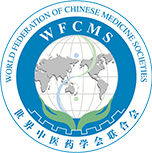Effect of electroacupuncture on NLRP3 inflammasome and morphology of uterine in rats with primary dysmenorrhea based on meridian acupoint viscera correlation theory
Release time: Aug 29,2023
Reading volume: 689
Objective: To explore the relationship between acupoints and the uterus in primary dysmenorrhea (PDM) and observe the effects of electroacupuncture (EA) on NLRP3 inflammasome and morphology of uterine tissues in rats.
Materials and Methods: Rats were divided into four groups: Control, PDM, EA, and nonacupoint EA (sham) groups. Writhing reactions in the rats were carefully monitored. Prostaglandin E2 (PGE2) and prostaglandin F2α (PGF2α) levels in the rat serum were measured using the enzyme-linked immunosorbent assay. To assess the damage, the histomorphology of the rat uterus was examined using the optical and electron microscopy. Western blotting was performed to determine the nucleotide-binding oligomerization domain carboxy-terminal leucine-rich repeat domain and amino-terminal pyrin domain-containing protein 3 (NLRP3), apoptosis-associated speck-like protein containing a caspase recruitment domain(ASC), and cysteinyl aspartate specific proteinase-1(caspase-1), interleukin-1β (IL-1β), and IL-18.
Results: Compared with the control group, the PDM group exhibited significant increases in both writhing times and scores, with a high pathological score of the uterine tissue. Serum PGF2α levels were significantly elevated, whereas PGE2 levels were significantly reduced. In addition, the expression levels of NLRP3, ASC, caspase-1, IL-1β, and IL-18 significantly increased (P < 0.001). The EA group showed opposite effects from the PDM group (all P < 0.05). The sham group exhibited significantly higher writhing time, serum PGF2α levels, and expression levels of NLRP3, ASC, caspase-1, IL-1β, and IL-18 than the EA group. In contrast, serum PGE2 levels in the sham group were significantly lower than those in the EA group (all P < 0.05).
Conclusions: NLRP3 inflammasome activation in PDM triggers pathological inflammation. Sanyinjiao(SP6) and Guanyuan(CV4) had specific effects on PDM. EA of SP6 and CV4 may treat PDM by inhibiting inflammation and protecting the morphological structure of the uterus.
Materials and Methods: Rats were divided into four groups: Control, PDM, EA, and nonacupoint EA (sham) groups. Writhing reactions in the rats were carefully monitored. Prostaglandin E2 (PGE2) and prostaglandin F2α (PGF2α) levels in the rat serum were measured using the enzyme-linked immunosorbent assay. To assess the damage, the histomorphology of the rat uterus was examined using the optical and electron microscopy. Western blotting was performed to determine the nucleotide-binding oligomerization domain carboxy-terminal leucine-rich repeat domain and amino-terminal pyrin domain-containing protein 3 (NLRP3), apoptosis-associated speck-like protein containing a caspase recruitment domain(ASC), and cysteinyl aspartate specific proteinase-1(caspase-1), interleukin-1β (IL-1β), and IL-18.
Results: Compared with the control group, the PDM group exhibited significant increases in both writhing times and scores, with a high pathological score of the uterine tissue. Serum PGF2α levels were significantly elevated, whereas PGE2 levels were significantly reduced. In addition, the expression levels of NLRP3, ASC, caspase-1, IL-1β, and IL-18 significantly increased (P < 0.001). The EA group showed opposite effects from the PDM group (all P < 0.05). The sham group exhibited significantly higher writhing time, serum PGF2α levels, and expression levels of NLRP3, ASC, caspase-1, IL-1β, and IL-18 than the EA group. In contrast, serum PGE2 levels in the sham group were significantly lower than those in the EA group (all P < 0.05).
Conclusions: NLRP3 inflammasome activation in PDM triggers pathological inflammation. Sanyinjiao(SP6) and Guanyuan(CV4) had specific effects on PDM. EA of SP6 and CV4 may treat PDM by inhibiting inflammation and protecting the morphological structure of the uterus.

